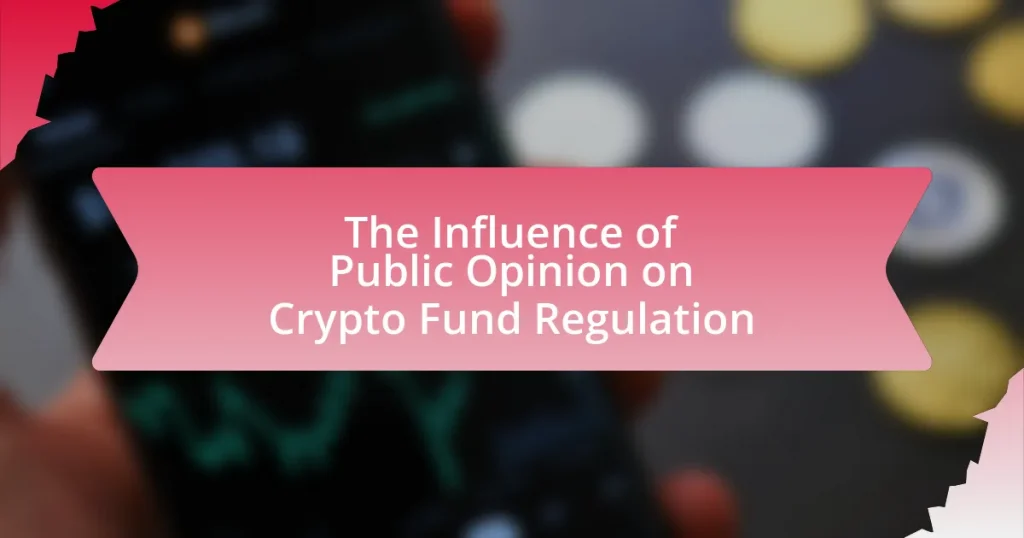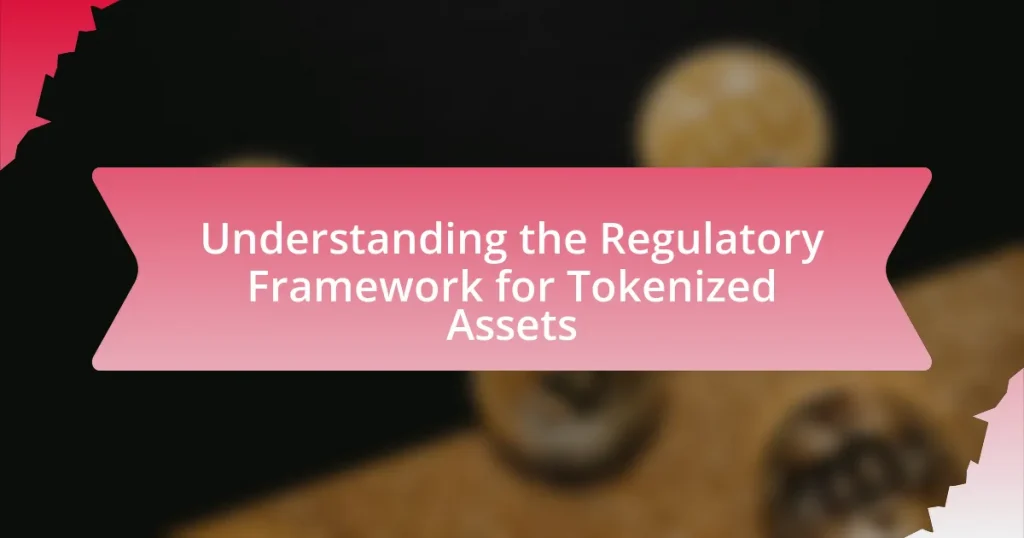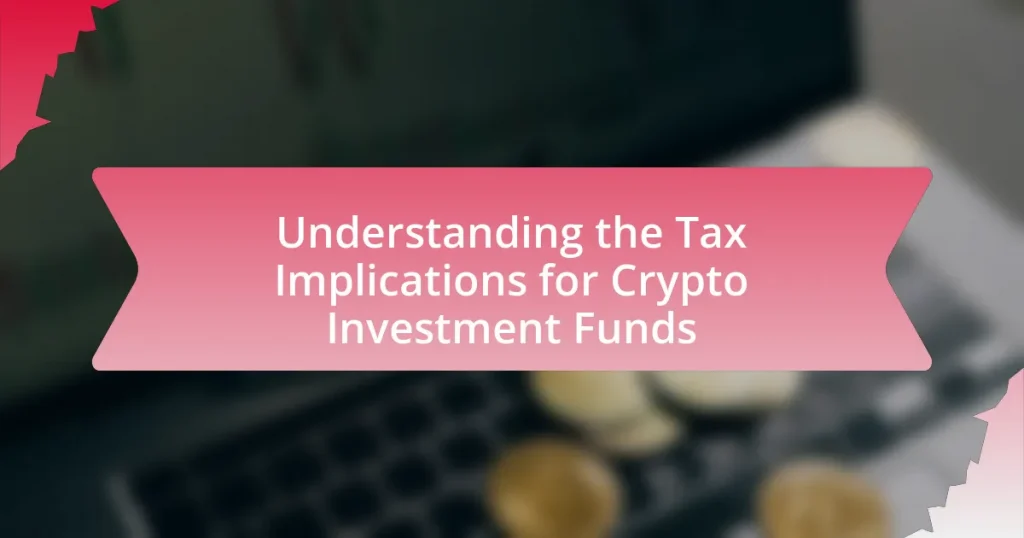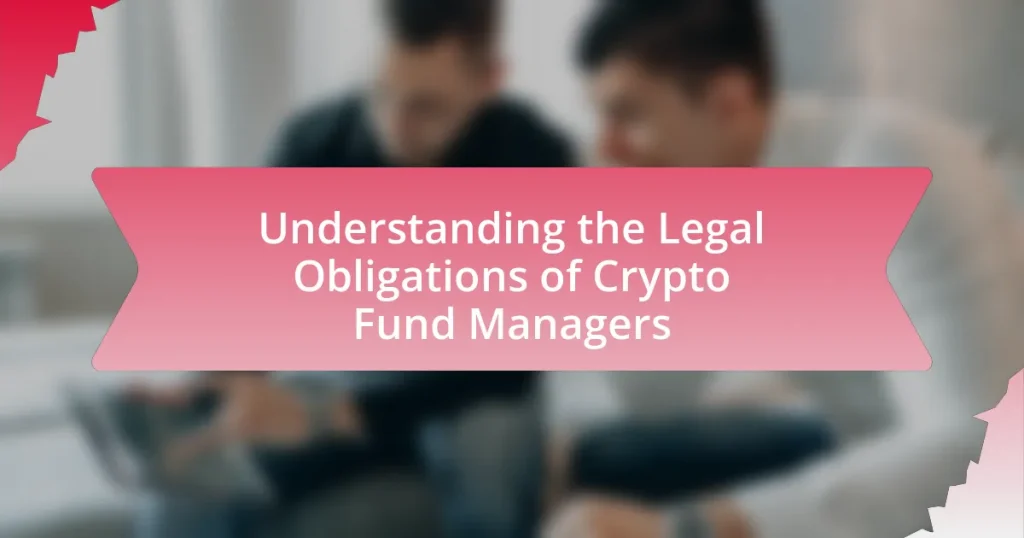The article examines the significant influence of public opinion on the regulation of crypto funds, highlighting how public sentiment shapes policymakers’ decisions and regulatory frameworks. It discusses the role of social media and public discourse in mobilizing collective action and influencing regulatory responses, particularly in light of concerns over investor protection and market stability. The article also explores historical trends in public perception of cryptocurrencies, the impact of major events on public trust, and the challenges posed by fluctuating public sentiment on regulatory consistency. Additionally, it emphasizes the importance of transparency, education, and stakeholder engagement in aligning public opinion with effective regulatory practices.
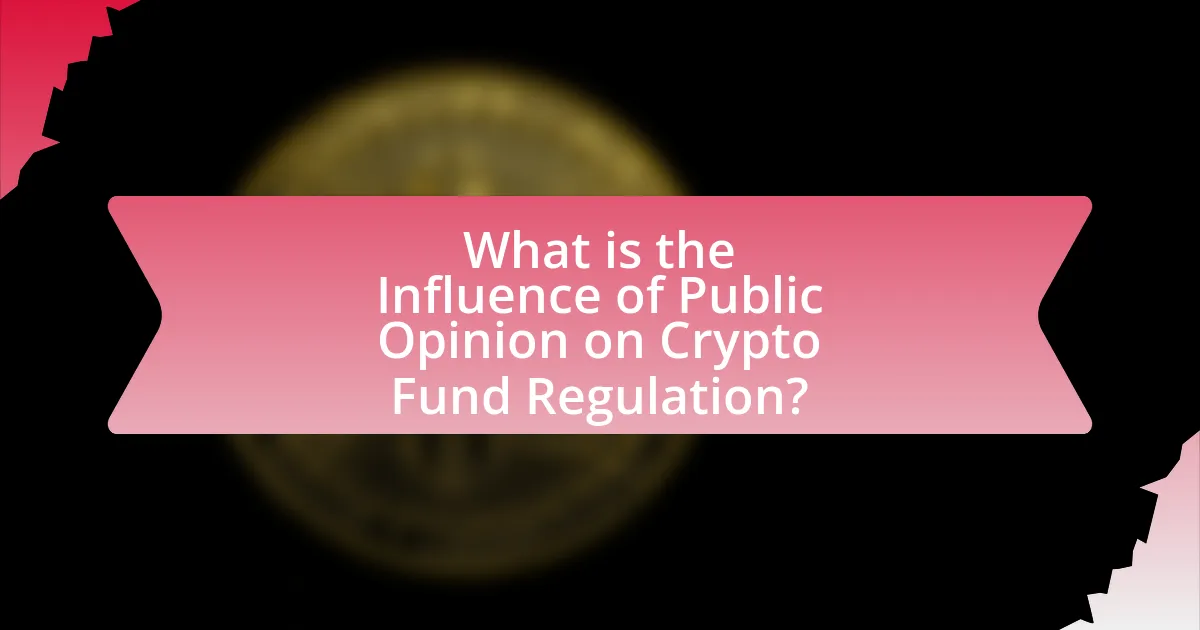
What is the Influence of Public Opinion on Crypto Fund Regulation?
Public opinion significantly influences crypto fund regulation by shaping policymakers’ perceptions and decisions. As public interest in cryptocurrencies grows, regulators often respond to concerns about investor protection, market stability, and financial crime. For instance, surveys indicate that a majority of the public supports stricter regulations to prevent fraud and protect consumers, prompting regulatory bodies like the SEC to consider more comprehensive frameworks. Additionally, high-profile incidents, such as the collapse of major crypto exchanges, amplify public demand for accountability, leading to expedited regulatory actions. This dynamic illustrates that public sentiment can drive legislative changes and regulatory scrutiny in the crypto space.
How does public opinion shape regulatory frameworks for crypto funds?
Public opinion significantly shapes regulatory frameworks for crypto funds by influencing policymakers and regulatory bodies to align regulations with the sentiments and concerns of the public. When a substantial portion of the population expresses concerns about issues such as security, fraud, or market volatility associated with crypto funds, regulators often respond by implementing stricter regulations to address these fears. For instance, the rise of public anxiety over cryptocurrency scams has led to increased scrutiny and the establishment of guidelines aimed at protecting investors, as seen in the actions taken by the U.S. Securities and Exchange Commission in recent years. Additionally, public support for innovation in financial technology can encourage regulators to adopt more favorable policies, as evidenced by the regulatory sandboxes established in various jurisdictions to foster crypto innovation while ensuring consumer protection.
What role do social media and public discourse play in influencing regulations?
Social media and public discourse significantly influence regulations by shaping public opinion and mobilizing collective action. Platforms like Twitter and Facebook allow individuals and groups to express their views, share information, and organize campaigns that can attract attention from policymakers. For instance, the rapid spread of information regarding cryptocurrency regulations has led to increased public engagement, prompting regulators to consider the sentiments and demands of the community. A notable example is the public outcry over proposed regulations in 2021, which resulted in adjustments to the regulatory framework in response to widespread criticism and advocacy from users and industry stakeholders. This demonstrates that social media serves as a powerful tool for amplifying voices and driving regulatory change.
How do public perceptions of risk affect regulatory decisions?
Public perceptions of risk significantly influence regulatory decisions by shaping the priorities and actions of policymakers. When the public perceives a high level of risk associated with a particular sector, such as cryptocurrency, regulators often respond by implementing stricter regulations to address these concerns. For instance, following the 2017 cryptocurrency market surge and subsequent crash, heightened public anxiety led to increased scrutiny and regulatory frameworks in various countries, including the United States and the European Union. This response illustrates how public sentiment can drive regulatory bodies to act preemptively to protect consumers and maintain market stability.
Why is public opinion important in the context of crypto fund regulation?
Public opinion is crucial in the context of crypto fund regulation because it shapes policymakers’ decisions and influences regulatory frameworks. When a significant portion of the public expresses concerns about the risks associated with cryptocurrencies, such as fraud or market volatility, regulators are more likely to respond with stricter regulations to protect investors. For instance, a survey by the Financial Industry Regulatory Authority (FINRA) indicated that 83% of investors believe that cryptocurrencies should be regulated, highlighting the demand for oversight. This public sentiment can lead to the establishment of laws and guidelines that govern crypto funds, ensuring a safer investment environment.
What impact does public trust have on regulatory effectiveness?
Public trust significantly enhances regulatory effectiveness by fostering compliance and cooperation among stakeholders. When the public perceives regulatory bodies as credible and trustworthy, they are more likely to adhere to regulations and support enforcement efforts. For instance, a study by the OECD in 2020 found that high levels of public trust in regulatory agencies correlate with increased compliance rates, as citizens believe that regulations serve the public interest and are enforced fairly. This trust also encourages open communication between regulators and the public, facilitating better-informed policies that reflect societal needs and concerns.
How do public attitudes towards cryptocurrencies influence policymakers?
Public attitudes towards cryptocurrencies significantly influence policymakers by shaping regulatory frameworks and legislative priorities. When a substantial portion of the public expresses enthusiasm for cryptocurrencies, policymakers are more likely to adopt a favorable stance, promoting innovation and investment in the sector. For instance, surveys indicate that as of 2021, approximately 46 million Americans owned cryptocurrencies, prompting lawmakers to consider regulations that support market growth while ensuring consumer protection. Conversely, negative public sentiment, often driven by concerns over fraud or volatility, can lead to stricter regulations aimed at mitigating risks, as seen in countries like China, where public apprehension led to a crackdown on crypto trading and mining. Thus, the interplay between public opinion and regulatory action is evident, with policymakers responding to the prevailing attitudes to balance economic interests and public safety.
What are the historical trends in public opinion regarding crypto funds?
Historical trends in public opinion regarding crypto funds have evolved significantly since the inception of cryptocurrencies. Initially, public sentiment was largely skeptical, with concerns about security, volatility, and regulatory uncertainty dominating discussions. For instance, a 2014 survey by the Pew Research Center indicated that only 24% of Americans had heard of Bitcoin, reflecting a general lack of awareness and understanding.
As cryptocurrencies gained popularity, particularly during the 2017 bull run, public opinion shifted towards a more favorable view, with increased interest in investment opportunities. A 2018 Gallup poll showed that 2% of Americans owned Bitcoin, indicating a growing acceptance of crypto assets. However, this enthusiasm was tempered by subsequent market corrections and regulatory scrutiny, leading to fluctuating public confidence.
By 2021, a survey by the Cambridge Centre for Alternative Finance revealed that 25% of adults in the U.S. viewed cryptocurrencies as a legitimate investment, highlighting a significant shift in perception. This trend was further supported by the rise of institutional investment in crypto funds, which bolstered public trust in the legitimacy of the market.
Overall, public opinion regarding crypto funds has transitioned from skepticism to cautious optimism, influenced by market developments, regulatory actions, and increased media coverage.
How have major events shaped public perception of cryptocurrencies?
Major events have significantly shaped public perception of cryptocurrencies by influencing trust, adoption, and regulatory responses. For instance, the 2017 Bitcoin price surge, which saw Bitcoin reach nearly $20,000, generated widespread media coverage and public interest, leading to increased investment and speculation in the cryptocurrency market. Conversely, events like the 2020 Twitter hack, where high-profile accounts were compromised to promote a Bitcoin scam, raised concerns about security and trustworthiness, negatively impacting public sentiment. Additionally, regulatory announcements, such as China’s ban on cryptocurrency transactions in 2021, have led to market volatility and shifts in public perception, highlighting the influence of government actions on the legitimacy and future of cryptocurrencies. These events collectively illustrate how public perception is shaped by both positive and negative experiences within the cryptocurrency landscape.
What patterns can be observed in public opinion over time?
Public opinion over time shows a trend of increasing acceptance and understanding of cryptocurrencies, particularly as awareness of blockchain technology grows. For instance, surveys conducted by the Pew Research Center indicate that in 2018, only 16% of Americans had heard of Bitcoin, while by 2021, that number rose to 86%. This shift reflects a broader trend where public sentiment has evolved from skepticism to a more favorable view, influenced by factors such as media coverage, regulatory developments, and the growing integration of cryptocurrencies into mainstream finance. Additionally, fluctuations in public opinion often correlate with market volatility; for example, during significant price surges, interest and positive sentiment tend to spike, while downturns can lead to increased skepticism and calls for regulation.
How does public opinion interact with other factors in crypto fund regulation?
Public opinion significantly influences crypto fund regulation by shaping policymakers’ perceptions and decisions. When a substantial portion of the public expresses concern over issues like fraud or market volatility, regulators often respond by implementing stricter guidelines to protect investors. For instance, surveys indicate that 70% of Americans believe that cryptocurrency should be regulated, prompting legislative bodies to consider more comprehensive regulatory frameworks. Additionally, public sentiment can be amplified by media coverage, which often highlights negative events in the crypto space, further pressuring regulators to act. This interaction between public opinion and regulatory measures illustrates how societal attitudes can drive changes in the legal landscape surrounding cryptocurrencies.
What challenges arise from the influence of public opinion on regulation?
The influence of public opinion on regulation presents challenges such as the potential for regulatory capture and the inconsistency of regulations. Regulatory capture occurs when regulatory agencies prioritize the interests of specific groups over the public good, often swayed by vocal public sentiment or lobbying efforts. This can lead to regulations that favor certain stakeholders, undermining the intended protective measures for the broader public. Additionally, public opinion can shift rapidly, resulting in inconsistent regulatory frameworks that may not adapt effectively to the evolving landscape of industries like cryptocurrency. For instance, fluctuating public sentiment can lead to abrupt regulatory changes that create uncertainty for businesses and investors, hindering innovation and growth in the sector.
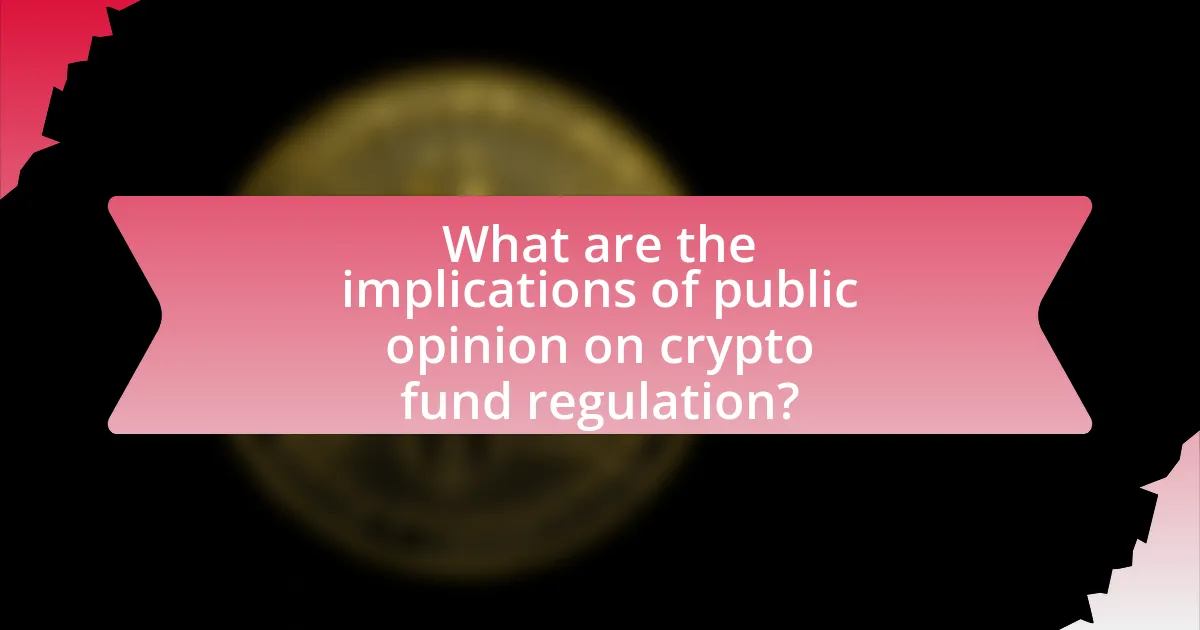
What are the implications of public opinion on crypto fund regulation?
Public opinion significantly influences crypto fund regulation by shaping policymakers’ decisions and regulatory frameworks. When the public expresses concern over issues like fraud, volatility, or security, regulators are more likely to implement stricter rules to protect investors. For instance, a 2021 survey by the Financial Industry Regulatory Authority indicated that 82% of respondents believed that cryptocurrency should be regulated, prompting discussions among lawmakers about potential regulatory measures. Additionally, positive public sentiment towards cryptocurrencies can lead to more favorable regulations, encouraging innovation and investment in the sector. Thus, public opinion acts as a barometer for regulatory action, directly impacting the landscape of crypto fund regulation.
How can public opinion lead to regulatory changes?
Public opinion can lead to regulatory changes by influencing policymakers and legislators to align regulations with the views and preferences of the electorate. When a significant portion of the public expresses strong opinions on issues, such as the regulation of crypto funds, elected officials often respond to these sentiments to maintain support and ensure re-election. For instance, surveys indicating that a majority of the population favors stricter regulations on cryptocurrency can prompt lawmakers to introduce or amend legislation to address these concerns. Historical examples include the 2008 financial crisis, where public outrage over financial practices led to the Dodd-Frank Act, demonstrating how collective public sentiment can drive substantial regulatory reform.
What examples exist of regulations being altered due to public sentiment?
Regulations have been altered due to public sentiment in various instances, notably in the realm of cannabis legalization. For example, in the United States, public support for cannabis legalization surged from 25% in 1996 to over 60% by 2020, prompting numerous states to change their laws to allow recreational and medicinal use. This shift in public opinion led to significant regulatory changes, including the legalization of cannabis in states like Colorado and California, which have since generated substantial tax revenue and economic growth. Another example is the regulation of same-sex marriage; public sentiment shifted dramatically in favor of marriage equality, leading to the Supreme Court’s decision in Obergefell v. Hodges in 2015, which legalized same-sex marriage nationwide. These examples illustrate how public sentiment can directly influence regulatory frameworks.
How do advocacy groups leverage public opinion to influence regulation?
Advocacy groups leverage public opinion to influence regulation by mobilizing grassroots campaigns, conducting public awareness initiatives, and utilizing social media to shape narratives. These groups often gather data through surveys and polls to demonstrate public support for specific regulatory changes, which they then present to policymakers as evidence of constituent sentiment. For example, a study by the Pew Research Center found that 70% of Americans support stricter regulations on cryptocurrency, providing advocacy groups with a compelling statistic to push for regulatory reforms. By framing issues in a way that resonates with the public, advocacy groups can create pressure on legislators to act in accordance with the expressed views of their constituents.
What are the potential risks of allowing public opinion to dictate regulation?
Allowing public opinion to dictate regulation poses significant risks, including the potential for regulatory instability and the prioritization of popular sentiment over expert analysis. Regulatory decisions influenced by fluctuating public opinion may lead to inconsistent policies that fail to address the complexities of the crypto market, resulting in a lack of investor protection and market integrity. Historical examples, such as the rapid regulatory changes in response to public outcry during the 2017 cryptocurrency boom, illustrate how emotional responses can overshadow rational, evidence-based policymaking, ultimately harming the industry and its stakeholders.
How can misinformation affect public opinion and regulatory outcomes?
Misinformation can significantly distort public opinion and influence regulatory outcomes by creating misconceptions about the subject matter. For instance, in the context of cryptocurrency, false narratives regarding the safety, legality, or environmental impact of crypto can lead to public fear or enthusiasm, which in turn pressures regulators to act in ways that may not align with factual evidence. A study by the Pew Research Center found that 64% of Americans believe misinformation has a major impact on public opinion, indicating a widespread recognition of its influence. This distortion can result in regulatory frameworks that either overly restrict or inadequately address the realities of the crypto market, ultimately shaping the landscape of financial innovation and consumer protection.
What are the consequences of reactive regulation based on public sentiment?
Reactive regulation based on public sentiment can lead to inconsistent and often hasty policy decisions that may not effectively address the underlying issues. Such regulation tends to prioritize short-term public approval over long-term stability and effectiveness, resulting in regulatory frameworks that may lack depth and thorough analysis. For instance, during market downturns, regulators may impose stringent measures to appease public fears, which can stifle innovation and drive legitimate businesses away from the market. Historical examples, such as the rapid regulatory responses following the 2017 cryptocurrency boom and subsequent crash, illustrate how public sentiment can lead to overregulation, creating barriers for new entrants and reducing overall market competitiveness.
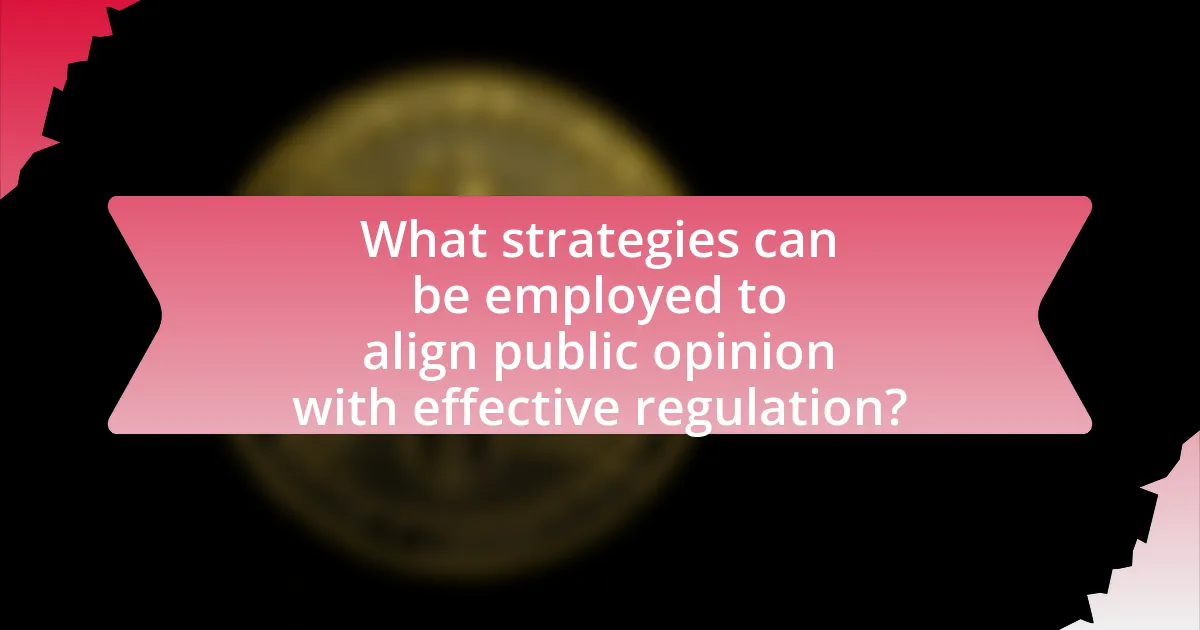
What strategies can be employed to align public opinion with effective regulation?
To align public opinion with effective regulation, strategies such as transparent communication, stakeholder engagement, and education initiatives can be employed. Transparent communication involves clearly articulating the rationale behind regulations, which helps build trust and understanding among the public. Stakeholder engagement includes involving community members, industry experts, and advocacy groups in the regulatory process, ensuring diverse perspectives are considered and fostering a sense of ownership. Education initiatives aim to inform the public about the benefits and risks associated with regulations, particularly in complex areas like crypto funds, thereby enhancing informed public discourse. Research indicates that when regulatory bodies actively engage with the public and provide clear information, public support for regulations increases, as seen in studies conducted by the Pew Research Center on technology regulation.
How can regulators engage with the public to shape informed opinions?
Regulators can engage with the public to shape informed opinions by implementing transparent communication strategies and facilitating open forums for discussion. These strategies include hosting public consultations, utilizing social media platforms for outreach, and providing accessible educational resources about regulations and their implications. For instance, the U.S. Securities and Exchange Commission (SEC) has conducted public meetings and released educational materials to demystify complex regulatory frameworks, thereby fostering a more informed public discourse. Such initiatives not only enhance public understanding but also encourage stakeholder participation, which is crucial for effective regulation in the evolving landscape of crypto funds.
What role does education play in influencing public perception of crypto funds?
Education significantly shapes public perception of crypto funds by enhancing understanding and reducing misinformation. When individuals receive comprehensive education about cryptocurrencies, including their risks and benefits, they are more likely to form informed opinions. For instance, a study by the Cambridge Centre for Alternative Finance found that increased knowledge about blockchain technology correlates with a more favorable view of cryptocurrencies. This understanding can lead to greater acceptance and participation in crypto markets, ultimately influencing regulatory attitudes and policies.
How can transparency in regulation foster public trust?
Transparency in regulation fosters public trust by ensuring that the processes and decisions made by regulatory bodies are open and accessible to the public. When regulations are transparent, stakeholders can understand the rationale behind rules, which reduces uncertainty and builds confidence in the system. For instance, a study by the World Bank found that countries with transparent regulatory frameworks experience higher levels of public trust and compliance, as citizens feel informed and engaged in the regulatory process. This transparency allows for accountability, enabling the public to hold regulators responsible for their actions, further enhancing trust in the regulatory environment.
What best practices should regulators follow to balance public opinion and regulatory integrity?
Regulators should prioritize transparency and stakeholder engagement to balance public opinion and regulatory integrity. By openly communicating the rationale behind regulations and actively involving the public in the decision-making process, regulators can foster trust and understanding. For instance, the U.S. Securities and Exchange Commission (SEC) has conducted public forums to gather input on cryptocurrency regulations, demonstrating a commitment to considering public sentiment while maintaining regulatory standards. This approach not only enhances the legitimacy of regulatory actions but also helps mitigate backlash from the public, ensuring that regulations are both effective and reflective of societal values.
How can regulators ensure that public input is constructive and informed?
Regulators can ensure that public input is constructive and informed by implementing structured engagement processes that include educational initiatives and clear guidelines for participation. By providing accessible information about the regulatory framework and the specific issues at hand, regulators can help the public understand the complexities of crypto fund regulation. For instance, the U.S. Securities and Exchange Commission (SEC) has conducted public forums and released educational materials to clarify regulatory expectations, which has led to more informed public commentary. Additionally, regulators can establish criteria for submissions that prioritize relevance and evidence-based arguments, thereby fostering a more productive dialogue.
What mechanisms can be established to gauge public sentiment effectively?
Surveys and social media analytics are effective mechanisms to gauge public sentiment. Surveys can collect quantitative data on public opinions regarding crypto fund regulation, allowing for statistical analysis of trends and sentiments. For instance, a 2021 survey by the Pew Research Center found that 86% of Americans had heard of cryptocurrency, indicating a significant public interest that can be further explored through targeted questions. Social media analytics tools can analyze large volumes of online conversations, providing insights into public sentiment by tracking mentions, hashtags, and engagement levels related to crypto topics. A study published in the Journal of Financial Stability demonstrated that social media sentiment significantly impacts cryptocurrency prices, reinforcing the importance of these mechanisms in understanding public opinion.
What are the key takeaways for stakeholders regarding public opinion and crypto fund regulation?
Key takeaways for stakeholders regarding public opinion and crypto fund regulation include the necessity to align regulatory frameworks with public sentiment to foster trust and compliance. Stakeholders must recognize that positive public opinion can lead to increased adoption and investment in crypto funds, while negative perceptions can result in stricter regulations and reduced market participation. For instance, a survey by the Global Blockchain Business Council in 2021 indicated that 70% of respondents believed that clearer regulations would enhance their confidence in investing in cryptocurrencies. Therefore, stakeholders should actively engage with public opinion through education and transparency initiatives to shape favorable regulatory outcomes.










